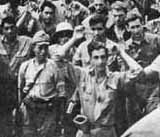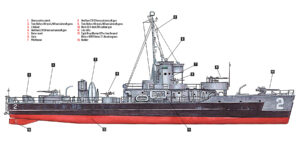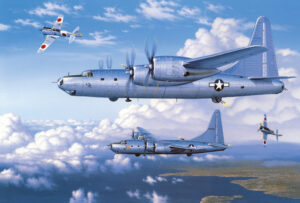The roster of atrocities committed by the Japanese armed forces in World War II contradicted the nation’s official position.
On the eve of World War II, the Japanese nation not only had reached a political impasse with its Western adversaries but also was fighting a cultural and ideological war within its own borders.
Japan’s awakening and transformation from a feudal state to a powerful player on the world stage had taken place virtually overnight. Less than 50 years after the U.S. fleet under Commodore Matthew C. Perry had opened Japan to Western trade, the Japanese armed forces had defeated mighty Russia, a traditional European power, in the Russo-Japanese War.
 As Japan assumed its place among the leading nations of the world, it became obvious that the country’s traditions and customs would be at odds with many of the time-honored tenets of Western culture. Balancing the old traditions with the new responsibility of world prominence became a tremendous challenge. In the years following World War I, an increasingly militaristic Japan prepared to embark on its campaign for the domination of Asia and the expulsion of the European and American authority that had been pre-eminent in the region for more than a century.
As Japan assumed its place among the leading nations of the world, it became obvious that the country’s traditions and customs would be at odds with many of the time-honored tenets of Western culture. Balancing the old traditions with the new responsibility of world prominence became a tremendous challenge. In the years following World War I, an increasingly militaristic Japan prepared to embark on its campaign for the domination of Asia and the expulsion of the European and American authority that had been pre-eminent in the region for more than a century.
When the leaders of the Imperial Japanese Army and Navy began to direct their country’s political course as well, and as Japanese victories in China, Malaya and the Philippines were realized with spectacular swiftness, the cultural conflict came to a head. In February 1904, Japanese Army Instruction No. 22 had been adopted. The same regulation, slightly revised, was in effect during World War II. It read in part, “Prisoners of war shall be treated with a spirit of goodwill and shall never be subjected to cruelties or humiliation.”
On July 27, 1929, the Geneva Convention was signed by representatives of 47 nations and ratified by 34 of them. Japan had indeed signed the agreement but never formally ratified it. When the Allies requested assurances from Japan that it would adhere to the terms of the convention, the response from Tokyo was that Japan was not legally required to but would do so mutatis mutandis, literally “with changes applied.”
The language of the convention was plain enough. “Prisoners of war are in the power of the hostile power, but not in the individuals’ or corps’ who have captured them. They must at all times be humanely treated and protected, particularly against acts of violence, insults and public curiosity. Measures of reprisal against them
are prohibited.”
Therefore, Japan had embarked upon a conflict against Western nations that had pledged to abide by the terms of the Geneva Convention while acknowledging that Japan was under no obligation to do so. Further, the ancient code of Bushido, translated as “the way of the warrior,” was an absolute contradiction to the terms of the convention. The spirit of Bushido ranked compassion and weakness as virtually the same sentiment. To be captured was to be disgraced and bring dishonor upon one’s family. Suicide was preferable. Thus, Allied prisoners might well find themselves at the mercy of captors adhering to a traditional code of military conduct that held them in contempt and subjected them to terrible abuse.
In contrast, Japanese Colonel Masanobu Tsuji, chief of the planning staff for the Twenty-Fifth Army during the campaign that resulted in the fall of Singapore, authored a pamphlet titled “Read This Alone–And The War Can Be Won.” Colonel Tsuji admonished the Japanese soldier that “pillaging, molesting women, and the heedless slaughter or maiming of people who offer no resistance, or any action which may sully the reputation of Japan as a country of moral rectitude, should be condemned by all in the strongest terms.”
Ultimately, a Japanese military that answered to no higher civilian authority did, in fact, rape and pillage, torture and maim, murder and molest. Contempt for the enemies of the empire, enforcement of the code of Bushido on Allied prisoners, and the inability of the Japanese to deal with the logistical nightmare presented by the need to care for and feed hundreds of thousands of prisoners and refugees combined to create a climate that produced a human rights catastrophe.
By the time the trials of suspected Japanese war criminals began, cultural differences mattered little.
Japanese War Crimes TV Special
In the first such production of its kind, Cowles History Group (publisher of World War II) and the National Historical Society present Murder Under the Sun: The Japanese War Crimes & Trials on The History Channel this September. This one-hour documentary, created by award-winning producer Lou Reda, uses authentic footage captured by the U.S. Army in the war’s final days. There are recent interviews with prison camp survivors whose vivid memories formed the basis for sketches created by artist Richard Rockwell specifically for this program. Check your local listings for air time. If you don’t receive The History Channel, please contact your local cable operator.
Michael E. Haskew, Editor, World War II




